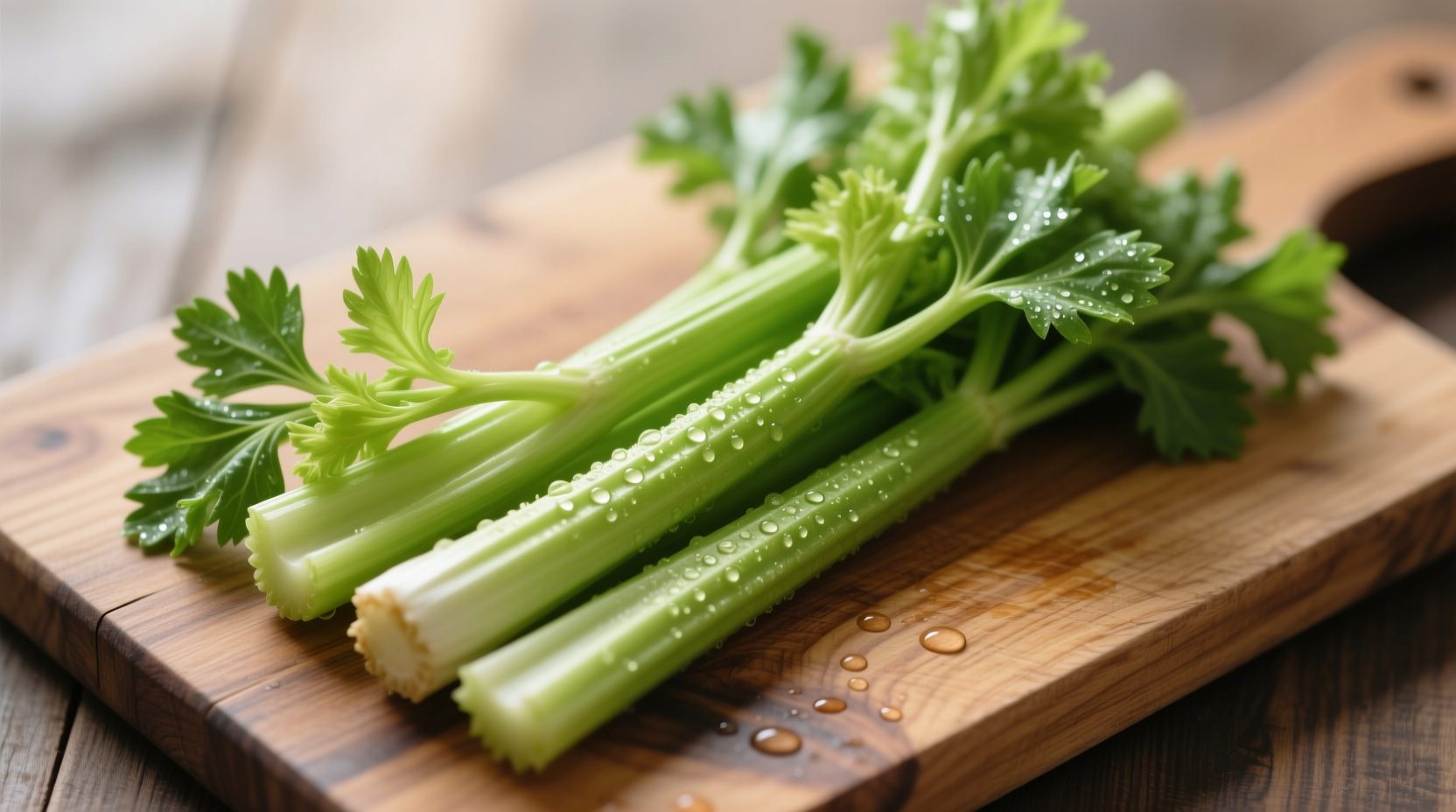Curious about how many calories in an celery stalk could fit into your daily nutrition plan? You're not alone. Millions tracking their dietary intake turn to celery as a go-to low-calorie option, but understanding the precise nutritional value helps make informed choices. Let's cut through the confusion with science-backed facts you can trust.
Understanding Celery's Calorie Count: What the Numbers Mean
When examining celery nutrition facts, it's crucial to consider serving size. Many people mistakenly believe celery has "negative calories"—requiring more energy to digest than it provides. While this popular myth persists, research shows celery's thermic effect remains positive, though minimal.
| Celery Serving Size | Calories | Key Nutrients |
|---|---|---|
| 1 medium stalk (7.5g) | 1 | Trace vitamin K, potassium |
| 1 cup chopped (100g) | 16 | 37% DV vitamin K, 5% DV vitamin C |
| 2 cups (200g) | 32 | 74% DV vitamin K, 10% DV vitamin C |
This celery nutritional value per 100g breakdown comes from the USDA FoodData Central database, the gold standard for nutritional information. Unlike many processed foods, celery's calorie count remains consistent across varieties, though organic versus conventional shows negligible differences in energy content.
Why Celery's Calorie Profile Matters for Your Diet
For those managing calories in one celery stalk as part of weight management, understanding context is key. Registered dietitians emphasize that celery's value extends beyond its minimal calorie count:
- High water content promotes hydration and satiety
- Fiber content (1.6g per cup) supports digestive health
- Natural electrolytes help maintain fluid balance
- Antioxidants like apigenin show potential health benefits
A 2022 review in Nutrients journal confirmed that non-starchy vegetables like celery contribute to sustainable weight management when incorporated into balanced meal plans. The study noted that participants consuming higher volumes of low-energy-density foods reported greater meal satisfaction with fewer total calories.

Practical Applications: Using Celery in Your Daily Nutrition
Knowing how many calories in celery juice compares to whole celery helps make smarter choices. Juicing removes fiber while concentrating natural sugars, increasing calories to approximately 45 per 8-ounce serving. For maximum benefit:
- Add chopped celery to salads for crunch without significant calorie impact
- Use celery sticks as vehicles for healthy dips like hummus (1 tbsp adds 25 calories)
- Include in soups and stews where it enhances flavor with minimal energy contribution
- Pair with protein sources like nut butter for balanced snacks
Registered dietitians warn against relying solely on so-called "negative calorie foods" for weight loss. A balanced approach incorporating various vegetables yields better long-term results than extreme dietary restrictions.
Common Misconceptions About Celery and Calories
The is celery really low calorie question often leads to oversimplified conclusions. While celery ranks among the lowest-calorie vegetables, its nutritional contribution shouldn't be dismissed. Unlike artificial zero-calorie products, celery provides:
- Naturally occurring phytonutrients with antioxidant properties
- Essential minerals like potassium that support heart health
- Hydration equivalent to water with added nutritional benefits
Research from the Harvard T.H. Chan School of Public Health emphasizes that whole foods like celery contribute to dietary patterns associated with better long-term health outcomes compared to highly processed alternatives, even when calorie counts appear similar.
Putting Celery in Context: How It Compares
Understanding celery for weight loss effectiveness requires comparison with similar vegetables. While all are low-calorie options, subtle differences matter for specific dietary goals:
| Vegetable (1 cup raw) | Calories | Fiber (g) | Notable Nutrients |
|---|---|---|---|
| Celery | 16 | 1.6 | Vitamin K, potassium |
| Cucumber | 16 | 0.5 | Vitamin K, magnesium |
| Spinach | 7 | 0.7 | Vitamin A, iron, folate |
| Broccoli | 31 | 2.4 | Vitamin C, vitamin K, folate |
This comparison shows celery's unique position—higher in certain nutrients than some vegetables while maintaining extremely low calories. The USDA's Dietary Guidelines consistently recommend variety in vegetable consumption for optimal nutrition.
Maximizing Celery's Benefits in Your Meal Planning
When incorporating celery into your diet, consider these evidence-based strategies:
- Volume eating: Combine celery with other low-calorie vegetables to create satisfying large-volume meals
- Nutrient pairing: Add healthy fats like olive oil to enhance absorption of fat-soluble vitamins
- Meal timing: Include celery in snacks to manage hunger between meals without significant calorie impact
- Flavor enhancement: Use celery's natural sodium content to reduce added salt in recipes
Dietary experts note that the crunch factor of celery may promote slower eating, which research shows can enhance satiety signals. A study published in the Journal of the Academy of Nutrition and Dietetics found that people who included crunchy vegetables in snacks consumed 11% fewer total calories during the meal.
Frequently Asked Questions
Here are answers to common questions about celery's calorie content and nutritional value:











 浙公网安备
33010002000092号
浙公网安备
33010002000092号 浙B2-20120091-4
浙B2-20120091-4